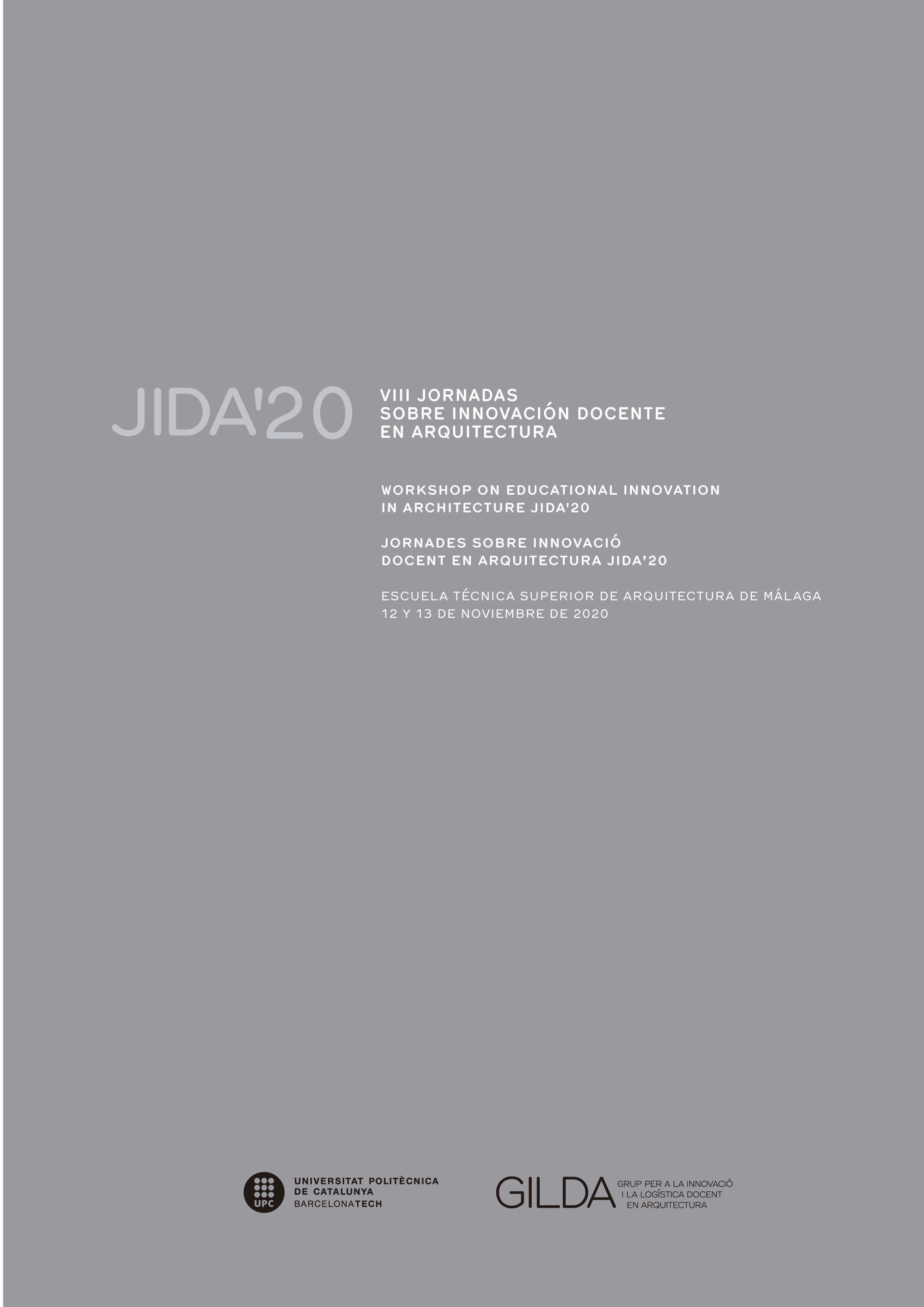Screen Generation: Living in the Time of Confinement
DOI:
https://doi.org/10.5821/jida.2020.9398Abstract
Representing sensitive experiences through audiovisual media is part of the modus vivendi of the screen generation. The use of prior knowledge of the image manipulation tools has allowed the students to concentrate the learning’s intensity on the narrative’s definition. This format provides great virtues, such as increased self-criticism and analytical capacity of the senses, or the promotion of multimodal teamwork. Incorporating them into pedagogy provided the students with a means of transmitting experiences lived in the inhabited space during confinement. The diversity of approaches in the delivered proposals was reflected in the subjectivity of the narratives, the techniques, the resources, and the spaces used.
References
COOK, P. (2014). Drawing: the motive force of architecture. Chichester: Wiley.
BERGERA, I. (2017). “Ver para hacer. La pelÃcula como argumento del proyectoâ€. GarcÃa, D.; BardÃ, B., eds. En: V Jornadas sobre Innovación Docente en Arquitectura (JIDA'17), Escuela Técnica Superior de Arquitectura de Sevilla, 16 y 17 de noviembre de 2017. Barcelona: UPC IDP; GILDA, p. 44-55.
DÃAZ VÃZQUEZ, P. (2018). Arquitectura y videojuegos: relaciones. Tesis doctoral. Coruña: Universidad da Coruña. < https://ruc.udc.es/dspace/handle/2183/21648?locale-attribute=es >, [Consulta: 5 de agosto 2020].
ETCHEGARAY HEINDRICH, F. (2016). Representación digital en las comunicaciones de proyectos arquitectónicos académicos: estudio de caso. Tesis doctoral, Barcelona, Universidad Politécnica de Catalunya, < https://upcommons.upc.edu/handle/2117/96141>, [Consulta: 5 de agosto 2020].
GIMÉNEZ, M. C; RODRÃGUEZ, M; PÉREZ, M. (2018). “Concurso de fotografÃa y vÃdeo. Una experiencia en la ETSAM-UPMâ€. GarcÃa, D.; BardÃ, B., eds. En: VI Jornadas sobre Innovación Docente en Arquitectura (JIDA'18), Escuela de IngenierÃa y Arquitectura de Zaragoza, 22 y 23 de noviembre de 2018. Barcelona: UPC IDP; GILDA; Zaragoza: Servicio de Publicaciones de la Universidad de Zaragoza, p. 519-527.
MILLS, K. A. (2010). “Filming in Progress: New Spaces for Multimodal Designingâ€. Linguistics and Education, 21(1), 14-28.
TOPÇU, Ãœ.; TABERNA, J.; HOFERT, K. (2015). “A visual tale of two cities: video as a tool for representation through informal learningâ€. GarcÃa, D.; BardÃ, B., eds. En: III Jornadas sobre Innovación Docente en Arquitectura (JIDA’15), Escuela Técnica Superior de Arquitectura de Barcelona, del 25 al 29 de mayo de 2015. Barcelona: UPC IDP; GILDA, p. 255-265.
ROIG SEGOVIA, E. (2014). El Entorno Aumentado: Imperativo informacional para una ecologÃa digital de lo arquitectónico. Tesis doctoral. Madrid: Universidad Politécnica de Madrid, < http://oa.upm.es/25540/ > [Consulta: 5 de agosto 2020].
SÃENZ DE OÃZA, F. J. (1987) Sáenz de OÃza: arquitectura y pintura, diálogos en vanguardia. [VÃdeo] Conferencia y debate entre Sáenz de OÃza y Lucio Muñoz, celebrado en el COAM el 18/02/1987. Madrid: Proyecto AAGRAFA, 2008. 2 DVD (130 min.)
SAHIN, M. (2019). “Contextual learning strategies in the early stages of architecture educationâ€. New Trends and Issues Proceedings on Humanities and Social Sciences. [Online]. 6(1), p. 313–320.
UBEDA, P.; ESCRIBANO, M.L. (2016). Aprendemos y enseñamos usando el vÃdeo con estudiantes universitarios de ELE en el ámbito de la Arquitectura y la Construcción. Didáctica. Lengua Y Literatura, 31, p. 65-78.






















